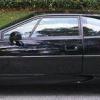-
Topics
-
Latest Update
-
1
-
1
Hana checker for sell
selling Alkalinity, phosphate ULR and nitrate HR hanna checker as a set for $60. no separate sell. deal at tampines. hp 9746 0545. -
0
Foc
Slag lover. Foc Collection today if possible. Collection at Teck Whye area. -
1
Equipments to sell
Hoping to clear before new year. Prices are negotiable. Welcome to trades but only looking for led bar or higher end pumps as intend to keep as backup. Sent from my FCP-N49 using Tapatalk -
0
WTS USED & Brand New REEF FACTORY ITEMS CHEAP
As per titled, Looking to sell the following: 1x Used Reef Factory KH KEEPER PLUS $350 RRP $1xxx 1x Used Reef Factory Smart Tester $450 RRP $1xxx 2x Used Reef Factory Dosing Pump x3 $180 ea RRP $4xx 3x Brand New Reef Factory Reef Flare S $150 ea Drop me a PM if keen, bundle price applicable. Sent from my iPhone using Tapatalk
-






Recommended Posts
Join the conversation
You can post now and register later. If you have an account, sign in now to post with your account.